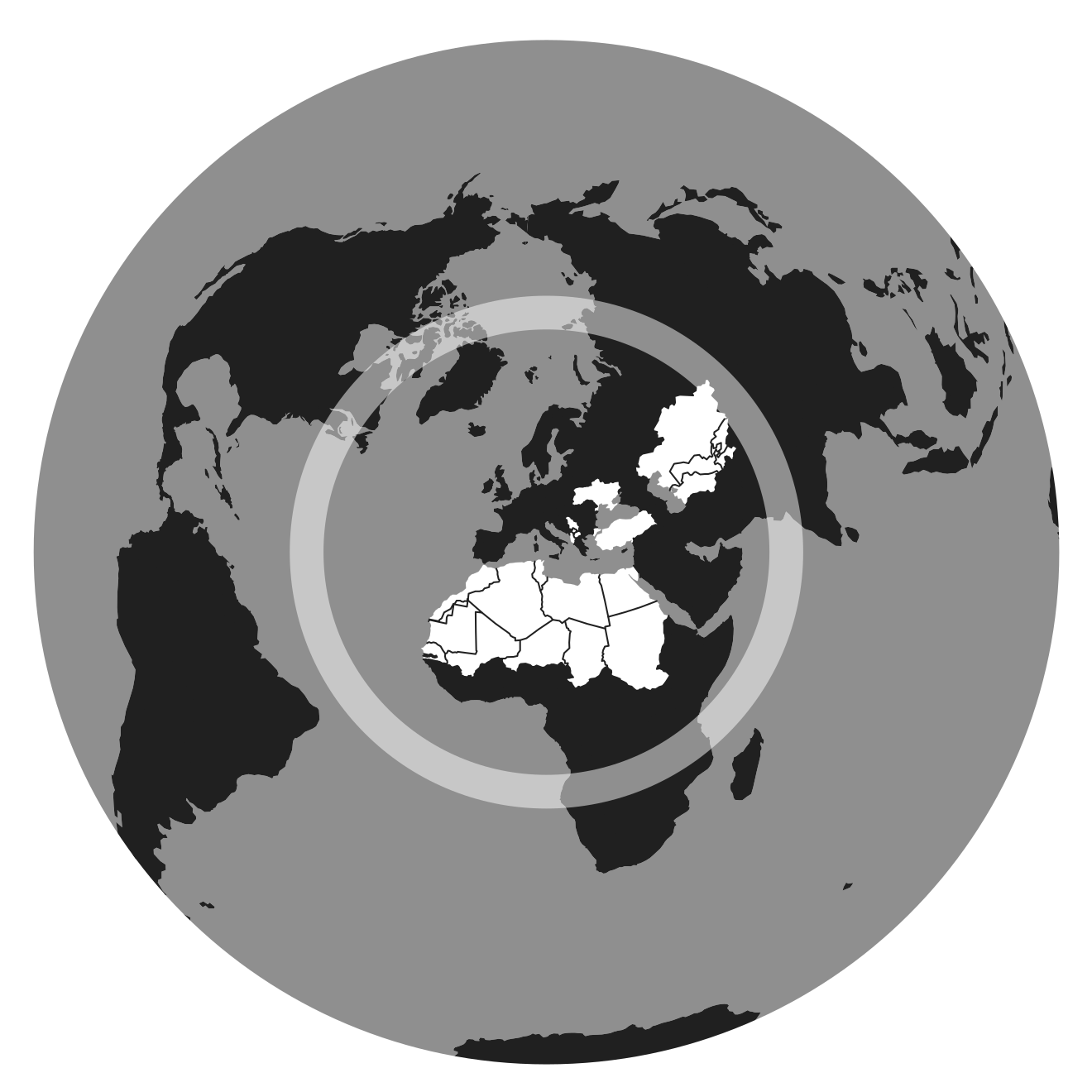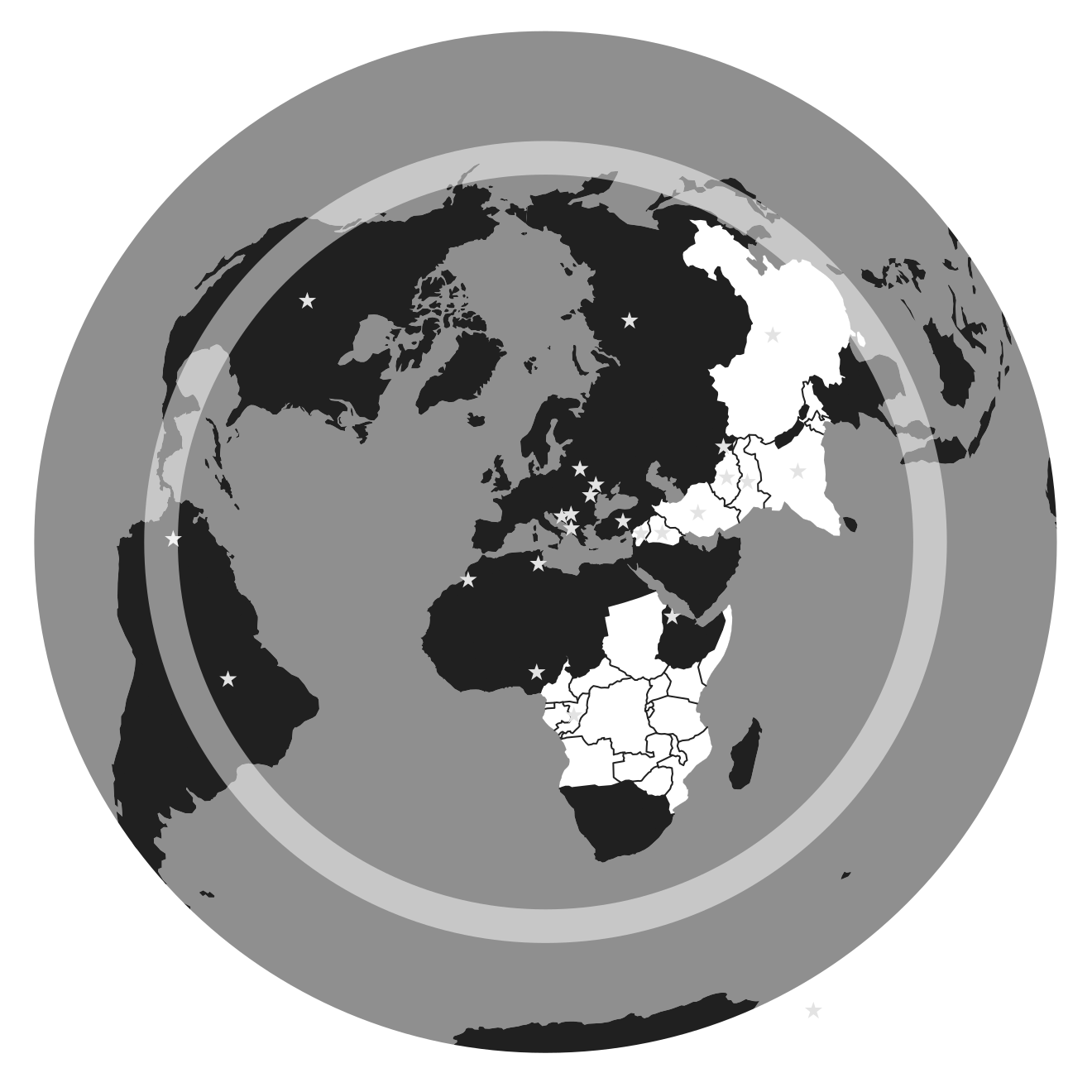Katherine Braun, Fabian Georgi, Robert Matthies,
Simona Pagano, Mathias Rodatz, Maria Schwertl
Umkämpfte Wissensproduktionen der Migration
Editorial
Maribel Casas-Cortes, Sebastian Cobarrubias
It is Obvious from the Map!
Disobeying the Production of Illegality beyond Borderlines

Concentric Circles, Map 1. EU member states/Schengen zone: As the integration of the European Union proceeded, the twenty-odd members of the EU pooled their sovereignty together and created a zone of free movement for goods, capital and people called the Schengen zone. The zone allows you to move, work and study freely in any of its member countries. Considered one of the success stories of the EU, Schengen has come under increasing critique since the so-called financial and refugee crises.
Aufsätze
Sarah Louise Nash
Knowing Human Mobility in the Context of Climate Change
The Self-Perpetuating Circle of Research, Policy, and Knowledge Production
Léonie Newhouse
Other Paths, Other Destinations
Towards a Manifold Reading of Mobility across Borders

Concentric Circles, Map 2. European Neighborhood Partnership: EU candidate countries are potential members of the EU, and must meet Schengen criteria. Transit countries which are adjacent to the Euroepan Union are offered a chance to access some markets in the EU without tariffs, and to participate in the regulatory frameworks through the European Neighbourhood Policy (ENP).
Debatte
Joshua Hatton
MARS Attacks!
A Cautionary Tale from the UK on the Relation between Migration and Refugee Studies (MARS) and Migration Control
Forschungswerkstatt

Concentric Circles, Map 3. Transit Zone: The transit zone includes many of the ENP countries (which have stronger trade links with the EU), along with other countries, which are seen from the EU as needing to policing migrants that are ‘transiting’ through their countries on the way to the EU. Countries of the third circle are considered to be points of transit for migrants on their way to the first circle. These countries are not offered integration into EU Markets and frameworks.
Interventionen
Rubia Salgado
Was wir wissen
Über kritische Wissensproduktion in der Bildungsarbeit als und mit Migrant*innen
Daniel Bendix
Der globale Süden ist hier!
Wie Refugee-Aktivismus den Zusammenhang von Flucht und ›Entwicklung‹ aufzeigt
Katharina Hoppe, Darja Klingenberg, Vanessa Eileen Thompson, Felix Trautmann, Alexander Vorbrugg
Worüber wir reden, wenn wir mit jemandem nicht reden wollen
Zum Spannungsverhältnis von Rassismuskritik und Meinungsfreiheit an der Universität

Concentric Circles, Map 4. Source Countries: The countries of the 4th circle are seen as migration »source« countries, briefly referred to in the 1998 strategy as »the Middle East, China, and black Africa«. The EU approach towards these countries includes border security as in the transit countries but is complimented by programs that encourage people to »stay in their circle«. Countries highlighted on this map are those considered part of the »4th circle« for EU purposes. The stars indicate countries identified as top sources of illegal entries in 2016.
Interviews
Katherine Braun, Simona Pagano
Violence against Migrant Women: Evidencing the Matrix of Colonial Power
An Interview with Ursula Santa Cruz